 D. Vasco da Gama (c. 1460-1469? – 23 December 1524), 1st Count of Vidigueira, was a Portuguese explorer, one of the most successful in the Age of Discovery and the commander of the first ships to sail directly fromEurope to India.
D. Vasco da Gama (c. 1460-1469? – 23 December 1524), 1st Count of Vidigueira, was a Portuguese explorer, one of the most successful in the Age of Discovery and the commander of the first ships to sail directly fromEurope to India.
He is one of the most famous and celebrated explorers from the Discovery Ages, being the first European to reach India by sea. This discovery was very significant and paved the way for the Portuguese to establish a long lasting colonial empire in Asia. The route meant that the Portuguese would not need to cross the highly disputed Mediterranean nor the dangerous Arabia, and that the whole voyage would be made by sea.
After decades of sailors trying to reach India with thousands of lives and dozens of vessels lost in shipwrecks and attacks, Gama landed in Calicut on 20 May 1498. Reaching the legendary Indian spice routes unopposed helped the Portuguese Empire improve its economy that, until Gama, was mainly based on trades along Northern and coastal West Africa. These spices were mostly pepper and cinnamon at first, but soon included other products, all new to Europe which led to a commercial monopoly for several decades.
Gama headed two of the armadas destined for India, the first and the fourth, the biggest armada, only four years after his arrival from the first one. For his contributions he was named in 1524 as the Governor of India, under the title of Viceroy, and given the newly created County of Vidigueira in 1519.
Numerous homages have been made worldwide in Vasco da Gama's honour for his explorations and accomplishments. He remains as a leading exploration figure to this day. The Portuguese national epic, Os Lusíadas, was written to celebrate Vasco da Gama. His first trip to India is widely considered a pinnacle of world history as it marked the beginning of the first wave of global multiculturalism.
Early life
Vasco da Gama was born 1460 or 1469 in Sines, on the southwest coast of Portugal, probably in a house near the church of Nossa Senhora das Salas. Sines, one of the few seaports on the Alentejo coast, consisted of little more than a cluster of whitewashed, red-tiled cottages, tenanted chiefly by fisherfolk.
Vasco da Gama's father was Estêvão da Gama, who had served in the 1460s as a knight of the household of Infante Ferdinand, Duke of Viseu and went on to rise in the ranks of the military Order of Santiago. Estêvão da Gama was appointed alcaide-mór (civil governor) of Sines in the 1460s, a post he held until 1478, and continued as a receiver of taxes and holder of the Order's commendas in the region.
Estêvão da Gama married Isabel Sodré, a daughter of João Sodré (also known as João de Resende), scion of a well-connected family of English origin. Her father and her brothers,Vicente Sodré and Brás Sodré, had links to the household of Infante Diogo, Duke of Viseuand were prominent figures in the military Order of Christ.
Vasco da Gama was the third of five sons of Estêvão da Gama and Isabel Sodré - in (probable) order of age: Paulo da Gama, João Sodré, Vasco da Gama, Pedro da Gama and Aires da Gama. Vasco also had one known sister, Teresa da Gama (who married Lopo Mendes de Vasconcelos).
Little is known of Vasco da Gama's early life. The Portuguese historian Teixeira de Aragão suggests that Vasco da Gama studied at the inland town of Évora, which is where he may have learned mathematics and navigation and it has even been claimed (although dubiously) that he studied under the astronomer Abraham Zacuto.
Around 1480, Vasco da Gama followed his father (rather than the Sodrés) and joined the Order of Santiago. The master of Santiago was Prince John, who would ascend to the throne in 1481 as King John II of Portugal. John II doted on the Order, and the Gamas' prospects rose accordingly.
In 1492, John II dispatched Vasco da Gama on a mission to the port of Setúbal and to the Algarve to seize French ships in retaliation for peacetime depredations against Portuguese shipping - a task that da Gama rapidly and effectively performed.
First voyage
On 8 July 1497 Vasco da Gama led a fleet of four ships with a crew of 170 men from Lisbon. The distance traveled in the journey around Africa to India and back was greater than around the equator. The navigators included Portugal's most experienced, Pero de Alenquer, Pedro Escobar, João de Coimbra, and Afonso Gonçalves. It is not known for certain how many people were in each ship's crew but approximately 55 returned, and two ships were lost. Two of the vessels were as naus or newly built for the voyage, possibly a caraveland a supply boat. The four ships were:
- The São Gabriel, commanded by Vasco da Gama; a carrack of 178 tons, length 27 m, width 8.5 m, draft 2.3 m, sails of 372 m²
- The São Rafael, whose commander was his brother Paulo da Gama; similar dimensions to the São Gabriel
- The caravel Berrio, slightly smaller than the former two (later renamed São Miguel), commanded by Nicolau Coelho
- A storage ship of unknown name, commanded by Gonçalo Nunes, later lost near the Bay of São Brás, along the east coast of Africa.
Journey to the Cape
The expedition set sail from Lisbon on 8 July 1497. It followed the route pioneered by earlier explorers along the coast of Africa via Tenerife and theCape Verde Islands. After reaching the coast of present day Sierra Leone, da Gama took a course south into the open ocean, crossing the Equator and seeking the South Atlantic westerlies that Bartolomeu Dias had discovered in 1487. This course proved successful and on 4 November 1497, the expedition made landfall on the African coast. For over three months the ships had sailed more than 6,000 miles of open ocean, by far the longest journey out of sight of land made by that time.
By 16 December, the fleet had passed the Great Fish River (Eastern Cape, South Africa) - where Dias had turned back - and sailed into waters previously unknown to Europeans. With Christmas pending, da Gama and his crew gave the coast they were passing the name Natal, which carried the connotation of "birth of Christ" in Portuguese.
Arab-controlled territory on the East African coast was an integral part of the network of trade in the Indian Ocean. Fearing the local population would be hostile to Christians, da Gama impersonated a Muslim and gained audience with the Sultan of Mozambique. With the paltry trade goods he had to offer, da Gama was unable to provide a suitable gift to the ruler and soon the local populace became suspicious of da Gama and his men. Forced by a hostile crowd to flee Mozambique, da Gama departed the harbor, firing his cannons into the city in retaliation.
Mombasa
In the vicinity of modern Kenya, the expedition resorted to piracy, looting Arab merchant ships - generally unarmed trading vessels without heavy cannons. The Portuguese became the first known Europeans to visit the port of Mombasa but were met with hostility and soon departed.
Mogadishu
In the Middle Ages, Mogadishu along with other coastal Somali cities in the south east of theHorn of Africa came under the Ajuuraan Empire's sphere of influence and experienced another Golden Age. When Vasco da Gama passed by Mogadishu, he noted that it was a large city with houses of four or five stores high and big palaces in its center and many mosques with cylindrical minarets.
Malindi
In February 1498, Vasco da Gama continued north, landing at the friendlier port of Malindi - whose leaders were then in conflict with those of Mombasa - and there the expedition first noted evidence of Indian traders. Da Gama and his crew contracted the services of a pilot whose knowledge of the monsoon winds allowed him to bring the expedition the rest of the way to Calicut, located on the southwest coast of India. Sources differ over the identity of the pilot, calling him variously a Christian, a Muslim, and a Gujarati. One traditional story describes the pilot as the famous Arab navigator Ibn Majid, but other contemporaneous accounts place Majid elsewhere, and he could not have been near the vicinity at the time. Also, none of the Portuguese historians of the time mention Ibn Majid.
Calicut, India
The fleet arrived in Kappadu near Calicut, India on 20 May 1498. The King of Calicut, the Samudiri (Zamorin), who was at that time staying in his second capital at Ponnani, returned to Calicut on hearing the news of the foreign fleets's arrival. The navigator was received with traditional hospitality, including a grand procession of at least 3,000 armed Nairs, but an interview with the Zamorin failed to produce any concrete results. The presents that da Gama sent to the Zamorin as gifts from Dom Manuel—four cloaks of scarlet cloth, six hats, four branches of corals, twelvealmasares, a box with seven brass vessels, a chest of sugar, two barrels of oil and a cask of honey—were trivial, and failed to impress. While Zamorin's officials wondered at why there was no gold or silver, the Muslim merchants who considered da Gama their rival suggested that the latter was only an ordinary pirate and not a royal ambassador. Vasco da Gama's request for permission to leave a factor behind him in charge of the merchandise he could not sell was turned down by the King, who insisted that da Gama pay customs duty—preferably in gold—like any other trader, which strained the relation between the two. Annoyed by this, da Gama carried a few Nairs and sixteen fishermen (mukkuva) off with him by force. Nevertheless, da Gama's expedition was successful beyond all reasonable expectation, bringing in cargo that was worth sixty times the cost of the expedition.
Return
Vasco da Gama left Calicut on 29 August 1498. Eager to set sail for home, he ignored the local knowledge of monsoon wind patterns which were still blowing onshore. The fleet initially inched north along the Indian coast, and then anchored in at Anjediva island for a spell. They finally struck out for their Indian Ocean crossing on 3 October 1498. But with the winter monsoon yet to set in, it was a harrowing journey. On the outgoing journey, sailing with the summer monsoon wind, it had taken Gama's fleet only 23 days to cross the Indian Ocean; now, on the return trip, sailing against the wind, it took 132 days. Vasco da Gama's fleet finally arrived in Malindi on 7 January 1499, in a terrible shape - approximately half of the crew had died during the crossing, and many of the rest were afflicted with scurvy. Not having enough crewmen left standing to manage three ships, Vasco da Gama ordered the São Rafael scuttled off the East African coast, and the crew re-distributed to the remaining two ships, the São Gabriel and the Berrio. Thereafter, the sailing was smoother. By early March, they had arrived in Mossel Bay, and crossed the Cape of Good Hope in the opposite direction on 20 March. They reached the west African coast by 25 April.
The diary record of the expedition ends abruptly here. Reconstructing from other sources, it seems they continued to Cape Verde, where Nicolau Coelho's Berrio separated from Vasco da Gama's São Gabriel, and sailed on by itself.The Berrio arrived in Lisbon on 10 July 1499 andNicolau Coelho personally delivered the news to King Manuel I and the royal court, then assembled in Sintra. In the meantime, back in Cape Verde, Vasco's brother, Paulo da Gama had fallen grievously ill. Gama elected to stay by his side onSantiago island, and handed the São Gabriel over to his clerk, João de Sá, to take home. The S. Gabriel under Sá arrived in Lisbon sometime in late July or early August. Vasco da Gama and his sickly brother eventually hitched a ride with a Guinea caravel returning to Portugal, but Paulo da Gama died en route. Vasco da Gama got off at the Azores to bury his brother at the monastery of São Francisco in Angra do Heroismo, and lingered there for a little while in mourning. Vasco da Gama eventually took passage on an Azorean caravel and finally arrived in Lisbon on 29 August 1499 (according to Barros)., or early September (8th or 18th, according to other sources). Despite his melancholic mood, Vasco da Gama was given a hero's welcome, and showered with honors, including a triumphal procession and public festivities. King Manuel wrote two letters in which he described Vasco da Gama's first voyage, in July and August 1499, soon after the return of the ships. Girolamo Sernigi also wrote three letters describing the first voyage of Vasco da Gama soon after the return of the expedition.
The expedition had exacted a large cost - one ship and over half the men had been lost. It had also failed in its principal mission of securing a commercial treaty with Calicut. Nonetheless, the spices brought back on the remaining two ships were sold at an enormous profit to the crown. Vasco da Gama was justly celebrated for opening a direct sea route to Asia. His path would be followed up thereafter by yearly Portuguese India Armadas.
Rewards
The spice trade would prove to be a major asset to the Portuguese royal treasury, and other consequences soon followed. For example, Gama's voyage had made it clear that the east coast of Africa, the Contra Costa, was essential to Portuguese interests; its ports provided fresh water, provisions, timber, and harbors for repairs, and served as a refuge where ships could wait out unfavorable weather. One significant result was the colonization of Mozambique by the Portuguese Crown.
In December 1499, Vasco da Gama was rewarded by King Manuel I of Portugal with the town ofSines as a hereditary fief (the very town which his father, Estêvão, had once held as acommenda). This turned out to be a rather complicated affair, for Sines still belonged to the Order of Santiago. On the face of it, it should not have been a problem for Jorge de Lencastre, the master of the Order, to endorse the reward - after all, Gama was a Santiago knight, one of their own, and a close associate of Lencastre himself. But the fact that Sines was awarded by the king's hand, provoked Lencastre to refuse out of principle - lest it encourage the king to make other donations of the Order's properties. Gama would spend the next few years attempting to take hold of Sines - an effort which would estrange him from Lencastre and eventually prompt Gama to abandon his beloved Order of Santiago, switching over to the rival Order of Christ in 1507.
In the meantime, Gama made do with a substantial hereditary royal pension of 300,000 reis, and the award of the noble title of Dom (lord) in perpetuity for himself, his siblings and their descendants. In early 1502 (some say as early as 1500), Vasco da Gama was awarded the title of Almirante dos mares de Arabia, Persia, India e de todo o Oriente ("Admiral of the Seas of Arabia, Persia, India and all the Orient") - an overwrought title reminiscent of the ornate Castilian title borne by Christopher Columbus. (Evidently, Manuel must have reckoned that if Castile had an 'Admiral of the Seas' running around, then surely Portugal should have one too.)[21] Another royal letter, dated October 1501, gave Vasco da Gama the personal right to intervene and exercise a determining role on any future India-bound fleet.
Around 1501, Vasco da Gama married Catarina de Ataíde, daughter of Álvaro de Ataíde, the alcaide-mór of Alvor (Algarve), and a prominent nobleman connected by kinship with the powerful Almeida family (Catarina was a first cousin of D. Francisco de Almeida).
Second voyage
In the meantime, Gama made do with a substantial hereditary royal pension of 300,000 reis, and the award of the noble title of Dom (lord) in perpetuity for himself, his siblings and their descendants. In early 1502 (some say as early as 1500), Vasco da Gama was awarded the title of Almirante dos mares de Arabia, Persia, India e de todo o Oriente ("Admiral of the Seas of Arabia, Persia, India and all the Orient") - an overwrought title reminiscent of the ornate Castilian title borne by Christopher Columbus. (Evidently, Manuel must have reckoned that if Castile had an 'Admiral of the Seas' running around, then surely Portugal should have one too.)[21] Another royal letter, dated October 1501, gave Vasco da Gama the personal right to intervene and exercise a determining role on any future India-bound fleet.
Around 1501, Vasco da Gama married Catarina de Ataíde, daughter of Álvaro de Ataíde, the alcaide-mór of Alvor (Algarve), and a prominent nobleman connected by kinship with the powerful Almeida family (Catarina was a first cousin of D. Francisco de Almeida).
Second voyage
The follow-up expedition, the Second India Armada launched in 1500, was placed under the command Pedro Álvares Cabral, with the mission of making a treaty with the Zamorin ofCalicut and setting up a Portuguese factory in the city. However, Cabral entered into a conflict with the local Arab merchant guilds, with the result that the Portuguese factory was overrun in a riot and up to 70 Portuguese killed. Cabral blamed the Zamorin for the incident and bombarded the city. Thus war broke out between Portugal and Calicut.
Vasco da Gama invoked his royal letter to take command of the 4th India Armada, scheduled to set out in 1502, with the explicit aim of taking revenge upon the Zamorin and force him to submit to Portuguese terms. The heavily armed fleet of fifteen ships and eight hundred men left Lisbon on 12 February 1502. One of the squadrons was led by his cousin, Estêvão da Gama (the son of Aires da Gama), and two of his maternal uncles, Vicente Sodré and Brás Sodré, were pre-designated to command an Indian Ocean naval patrol.
Vasco da Gama invoked his royal letter to take command of the 4th India Armada, scheduled to set out in 1502, with the explicit aim of taking revenge upon the Zamorin and force him to submit to Portuguese terms. The heavily armed fleet of fifteen ships and eight hundred men left Lisbon on 12 February 1502. One of the squadrons was led by his cousin, Estêvão da Gama (the son of Aires da Gama), and two of his maternal uncles, Vicente Sodré and Brás Sodré, were pre-designated to command an Indian Ocean naval patrol.
Along the way, on the outgoing voyage, Gama's fleet opened contact with the East African gold port of Sofala, and reduced the sultanate of Kilwa to tribute, extracting a substantial sum of gold. On reaching India in October 1502, da Gama started capturing any Arab vessel he came across in Indian waters, most notoriously the Miri, a pilgrim ship from Mecca, whose passengers he had massacred in open water. He then appeared before Calicut, demanding redress for the treatment meted out to Cabral. While the Zamorin was willing to sign a new treaty, Gama made a preposterous call to the Hindu king to expel all Muslims from Calicut before beginning negotiations, which was naturally turned down. The Portuguese fleet then bombarded the city for nearly two days from the sea shore. He also captured several rice vessels and barbarously cut off the crew's hands, ears and noses, dispatching them with an insulting note to the Zamorin.
The violent treatment meted out by Gama quickly brought trade along the Malabar Coast of India, upon which Calicut depended, to a standstill. But the Zamorin nonetheless refused to submit to Portuguese terms, and even ventured to hire a fleet of strong corsair warships to challenge Gama's armada (which Gama managed to defeat in a naval battle before Calicut harbor). Gama loaded up with spices at Cochin and Cannanore, small nearby kingdoms, half-vassal and half-at-war with the Zamorin, whose alliances had been secured by prior Portuguese fleets. The 4th armada left India in early 1503. Gama left behind a small squadron of caravels, under the command of his uncle, Vicente Sodré, to patrol the Indian coast, continue harassing Calicut shipping and protect the Portuguese factories at Cochin and Cannanore from the Zamorin's inevitable reprisals.
Vasco da Gama arrived back in Portugal in September 1503, effectively having failed in his mission to bring the Zamorin to submission. This failure, and the subsequent more galling failure of his uncle Vicente Sodré to protect the Portuguese factory in Cochin, probably counted against any further rewards. When the Portuguese king Manuel I of Portugal decided to appoint the first governor and viceroy of Portuguese India in 1505, Vasco da Gama was conspicuously overlooked, and the post given to D. Francisco de Almeida.
Vasco da Gama arrived back in Portugal in September 1503, effectively having failed in his mission to bring the Zamorin to submission. This failure, and the subsequent more galling failure of his uncle Vicente Sodré to protect the Portuguese factory in Cochin, probably counted against any further rewards. When the Portuguese king Manuel I of Portugal decided to appoint the first governor and viceroy of Portuguese India in 1505, Vasco da Gama was conspicuously overlooked, and the post given to D. Francisco de Almeida.
Pilgrim ship incident
On his second voyage, Vasco da Gama inflicted acts of cruelty upon competing traders and local inhabitants, which sealed his notoriety in India. During his second voyage toCalicut, da Gama intercepted a ship of Muslim pilgrims at Madayi travelling from Calicut to Mecca. Described in detail by eyewitness Thomé Lopes and chronicler Gaspar Correia as one that is unequalled in cold-blooded cruelty, da Gama looted the ship with over 400 pilgrims on board including 50 women, locked in the passengers, the owner and an ambassador from Egypt and burnt them to death. They offered their wealth which 'could ransom all the Christian slaves in the Kingdom of Fez and much more' but were not spared. Da Gama looked on through the porthole and saw the women bringing up their gold and jewels and holding up their babies to beg for mercy.'
After demanding the expulsion of Muslims from Calicut to the Hindu Zamorin, the latter sent the high priest Talappana Namboothiri (the very same person who conducted da Gama to the Zamorin's chamber during his much celebrated first visit to Calicut in May 1498) for talks. Da Gama called him a spy, ordered the priests' lips and ears to be cut off and after sewing a pair of dog's ears to his head, sent him away.
Third voyage
Third voyage
For the next two decades, Vasco da Gama lived out a quiet life, unwelcome in the royal court and sidelined from Indian affairs. His attempts to return to the favor of Manuel I (including switching over to the Order of Christ in 1507), yielded little. Almeida, the larger-than-life Albuquerque and the efficient Albergaria were the king's new point men for India. But afterFerdinand Magellan defected to the Crown of Castile in 1518, Vasco da Gama threatened to do the same, prompting the king to undertake steps to retain him in Portugal and avoid the embarrassment of losing his own "Admiral of the Seas of India" to Spain. In 1519, after years of ignoring his petitions, King Manuel I finally hurried to give Vasco da Gama a feudal title, appointing him the first Count of Vidigueira, a count title created by a royal decree issued in Évora on 29 December, after a complicated agreement with Dom Jaime, Duke of Braganza, who ceded him on payment the towns of Vidigueira and Vila dos Frades. This decree granted Vasco da Gama and his heirs all the revenues and privileges related, thus establishing da Gama as the first Portuguese count who was not born with royal blood.
After the death of King Manuel I in late 1521, his son and successor, King John III of Portugalset about reviewing the Portuguese government overseas. Turning away from the Albuquerque clique, represented by Diogo Lopes de Sequeira, John III looked for a fresh start. Vasco da Gama re-emerged from his political wilderness as an important advisor to the new king's appointments and strategy. Seeing the new Spanish threat to the Maluku Islands as the priority, Vasco da Gama advised against the obsession with Arabia that had pervaded much of the Manueline period, and continued to be the dominant concern of Duarte de Menezes, then-governor of Portuguese India. Menezes also turned out to be incompetent and corrupt, subject to numerous complaints. As a result, John III decided to appoint Vasco da Gama himself to replace Menezes, confident that the magic of his name and memory of his deeds might better impress his authority, and manage the transition to a new government and new strategy.
After the death of King Manuel I in late 1521, his son and successor, King John III of Portugalset about reviewing the Portuguese government overseas. Turning away from the Albuquerque clique, represented by Diogo Lopes de Sequeira, John III looked for a fresh start. Vasco da Gama re-emerged from his political wilderness as an important advisor to the new king's appointments and strategy. Seeing the new Spanish threat to the Maluku Islands as the priority, Vasco da Gama advised against the obsession with Arabia that had pervaded much of the Manueline period, and continued to be the dominant concern of Duarte de Menezes, then-governor of Portuguese India. Menezes also turned out to be incompetent and corrupt, subject to numerous complaints. As a result, John III decided to appoint Vasco da Gama himself to replace Menezes, confident that the magic of his name and memory of his deeds might better impress his authority, and manage the transition to a new government and new strategy.
By his appointment letter of February 1524, John III granted Vasco da Gama the privileged title of "Viceroy", being only the second Portuguese governor to enjoy that title (the first was Francisco de Almeida in 1505). His second son, Estêvão da Gama was simultaneously appointed Capitão-mor do Mar da Índia ('Captain-major of the Indian Sea', commander of the Indian Ocean naval patrol fleet), to replace Duarte's brother, Luís de Menezes. As a final condition, Gama secured from John III of Portugal the commitment to appoint all his sons successively as Portuguese captains of Malacca.
Setting out in April 1524, with a fleet of fourteen ships, Vasco da Gama took as his flagship the famous large carrack Santa Catarina do Monte Sinai on her last journey to India, along with two of his sons, Estêvão and Paulo. After a troubled journey (four or five of the ships were lost en route), he arrived in India in September. Vasco da Gama immediately invoked his high viceregent powers to impose a new order in Portuguese India, replacing all the old officials with his own appointments. But Gama contracted malaria not long after arriving, and died in the city of Cochin on Christmas Eve in 1524, three months after his arrival. As per royal instructions, Gama was succeeded as governor of India by one the captains who had come with him, Henrique de Menezes (no relation to Duarte). Vasco's sons Estêvão and Paulo immediately lost their posts and joined the returning fleet of early 1525 (along with the dismissed Duarte de Menezes and Luís de Menezes). It is reported that, on the return journey, Luís de Menezes engineered a mutiny and seized control of the Santa Catarina do Monte Sinai, and proceeded to turn to a piratical career.
Vasco da Gama's body was first buried at St. Francis Church, which was located at Fort Kochi in the city of Kochi, but his remains were returned to Portugal in 1539. The body of Vasco da Gama was re-interred in Vidigueira in a casket decorated with gold and jewels.
The Monastery of the Hieronymites, in Belém was erected in honor of his voyage to India.
The Monastery of the Hieronymites, in Belém was erected in honor of his voyage to India.
Legacy
As much as anyone after Henry the Navigator, Vasco da Gama was responsible for Portugal's success as an early colonising power. Beside the fact of the first voyage itself, it was his astute mix of politics and war on the other side of the world that placed Portugal in a prominent position in Indian Ocean trade. Following da Gama's initial voyage, the Portuguese crown realized that securing outposts on the eastern coast of Africa would prove vital to maintaining national trade routes to the Far East.
The Portuguese national epic, the Lusíadas of Luís Vaz de Camões, largely concerns Vasco da Gama's voyages.
The 1865 grand opera L'Africaine: Opéra en Cinq Actes, composed by Giacomo Meyerbeerfrom a libretto by Eugène Scribe, prominently includes the character of Vasco da Gama. The events depicted, however, are fictitious. Meyerbeer's working title for the opera was Vasco da Gama. A 1989 production of the opera by the San Francisco Opera featured noted tenorPlácido Domingo in the role of da Gama. The 19th-century composer Louis-Albert Bourgault-Ducoudray composed an eponymous 1872 opera based on da Gama's life and exploits at sea.
The port city of Vasco da Gama in Goa is named after him, as is the crater Vasco da Gamaon the Moon. There are three football clubs in Brazil (including Club de Regatas Vasco da Gama) and Vasco Sports Club in Goa that were also named after him. There exists a church in Kochi, Kerala called Vasco da Gama Church, and a private residence on the island of Saint Helena. The suburb of Vasco in Cape Town also honours him.
A few places in Lisbon's Parque das Nações are named after the explorer, such as the Vasco da Gama Bridge, Vasco da Gama Towerand the Centro Comercial Vasco da Gama shopping centre. The Oceanário in the Parque das Nações has a mascot of a cartoon diver with the name of "Vasco", who is named after the explorer.
Vasco da Gama was the only explorer on the final pool of Os Grandes Portugueses. Although the final shortlist featured other Age of Discovery related people, they were not actually explorers nor navigators for any matter.
The Portuguese Navy has a class of frigates named after him. There are three Vasco da Gama class frigates in total, of which the first one also bears his name.
South African musician Hugh Masekela recorded an anti-colonialist song entitled "Vasco da Gama (The Sailor Man)", which contains the lyrics "Vasco da Gama was no friend of mine". He later recorded another version of this song under the name "Colonial Man".
Vasco da Gama appears as an antagonist in the Indian film Urumi. The film, directed by acclaimed cinematographer Santosh Sivan, depicts a failed assassination attempt on da Gama by an Indian.

This work is licensed under a Creative Commons Attribution-ShareAlike 3.0 Unported License.




 07:04
07:04
 Planet Worldwide
Planet Worldwide

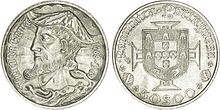
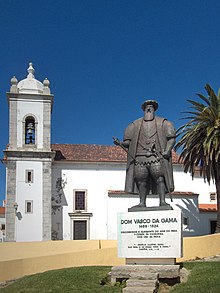
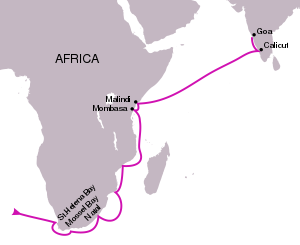
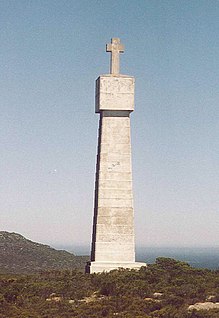

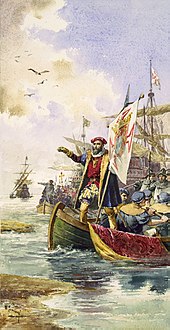
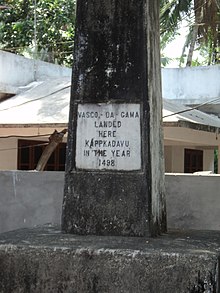


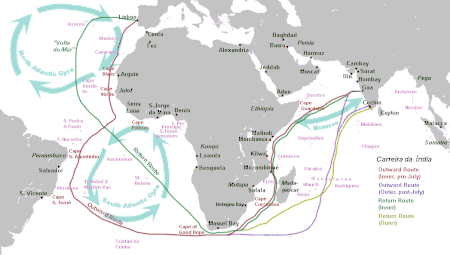



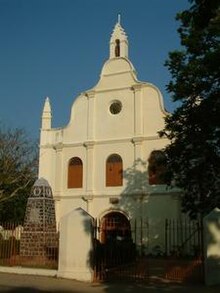
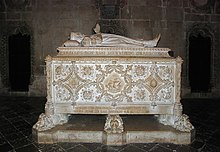
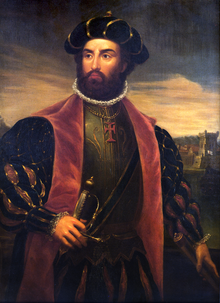

 Posted in:
Posted in:
1 comments:
very interesting
Post a Comment